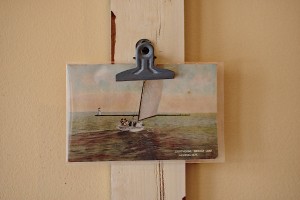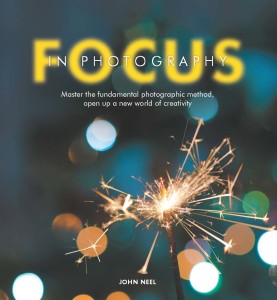Photographing with the Tamron SP 45mm f1.8 lens on my Sony A7
Prime Focal-Length Lens
In some ways, this article is really about my wanting to test a very interesting lens. But even more important, it is written in an attempt to convey the need for this lens to be produced in what has become the more popular lens mount than what it has now. At this writing, the lens being discussed is produced in several mounts – Canon EOS, Nikon mount, and the Sony A-mount. It is the A-mount that I would like to see as an E-mount as well. Nothing wrong with the A-mount. It works for the great Sony cameras that employ it, I just want to see it in an E-mount as well.
I own a Sony a7 that I love. I bought it in part because it is so adaptable.
The Tamron 45mm lens that I am discussing here is built with a Canon mount. To make this lens work on my Sony, I decided to find a used version of the Commlite – Canon to Sony E Mount adapter, which allows the electronic connection for autofocus and other communications with the camera. Personally, I prefer to use manual focus when I can. I want to control exactly where the lens is focused which is usually not on the first thing in front of the camera.
Since the introduction of mirrorless cameras and lens adapters, it has made it pretty simple to mount nearly any lens to nearly any mirrorless camera. Until recently, the use of certain automatic camera functions was not available. New adapters had to be designed to match the electronic pinning that allows the communication between the camera controls and the lens. As far as the adapter goes, it does what it says it does. It allows the EXIF data to be recorded off the lens. It supports autofocus. The aperture is controlled by the camera. Image Stabilization of the lens can also be used.
Initially, I was a little alarmed that the lens mount did not work entirely as I had hoped. It seemed to search for the focus point. It seemed to hesitate and did a little dancing back and forth around the intended focus. Once I changed the focus from spot focus to center focus, it worked perfectly. At least as well as I had hoped it would work.
As stated in a previous article, when I photograph with a prime lens, I am looking for the subjects that fit that framing. As such, it becomes much more of a challenge to find the particular vantage points that permit the best picture framing, the best angles to explore, compression of details, and depth of field considerations.
Before I discuss this lens, you may want to read a recent article I wrote about prime lenses. Here is the link: Prime Focal-Length Lens
Please Read – Disclosure Statement
Here is a link to the SP 45mm F/1.8 Di VC USD
There are many good reasons to use a prime focus lens. Probably the most interesting to me is that the user becomes accustomed to seeing the world through a particular framing and a particular perspective. While it makes my work a bit more of a challenge, it is what makes me look harder at my subjects. I believe it makes the work I do more interesting and perhaps more potent.
Whenever I have a zoom lens mounted to my camera, I tend to set the lens at a fixed focal length so that I can sense the subject through that particular perspective. It is a habit I formed years ago when shooting film, which comes mostly from using prime lenses. While it might seem restrictive, it allows me to concentrate on being at the right spot to capture a certain perspective. Even when the lens I’m using is a zoom, I generally set the lens at a specific focal length and search for subjects that fit that specific point of view.
I always feel the need to take a camera wherever I go. Almost always, I carry a single camera with a single lens that I believe has the best chance at capturing what I hope to find. This decision has everything to do with feeling at one with the camera, the lens, and my expectation of a given perspective.
To me, it is an advantage. Rather than zooming back and forth, I walk around my subjects, carefully looking at the scene from different angles and distances. In doing so, I force myself to work a bit harder to really see the subject and to find the sweet spot that yields the best vantage point within all possible angles. I believe this forced view of the world is actually a good thing for developing anyone’s ability to see the world and to better find the subjects it holds.
My latest book – Focus In Photography
While I personally find this lens to be quite comfortable to carry, it is a fairly large lens as far as a prime lens goes. This is because it’s also a fast lens. By fast, I mean that it has a very large aperture of f1.8. While there are other lenses that may produce similar apertures, the Tamron 45mm is a lens with a very fast aperture as well as image stabilization. In order to accommodate such an aperture, the physical diameter of the lens barrel must be large enough to accommodate the large diameter lens opening and the entire mechanism that controls it – including the motors that govern the autofocus and the vibration control.
Tamron has done a great job of creating a sharp, shallow depth of field lens.
In the history of photography, there are many variables that have been exploited for the way lenses handle light. I cover much of that in my latest book – Focus In Photography.
Prime lenses such as the 45mm Tamron require that the photographer locates the sweet spot and the framing by moving through the scene to the exact spot needed to produce the best results. Unlike a Zoom, which in my opinion, can cause the photographer to become a little lazy, or perhaps less likely to search the subjects to find that point in time and space where the lens works its best view.
Magic happens when the photographer realizes the potential in his hands for reproducing the image that brings the vision to life. That requires a bit of know-how and a lens that can produce the look that the photographer has in mind.
Please Read – Disclosure Statement
The beauty of a lens like this is that it is probably best used to force the separation of details. Large fast apertures produce a wonderfully thin depth of field, which makes for very beautiful background bokeh. Background information is thrown into a wonderfully soft out of focus.
As I stated in an earlier review of the Tamron 85mm – perhaps the most important thing about searching for your subjects with any lens is to discover the world through its unique view.
To me, a fast lens is about thin planes of focus. At its widest opening of 1.8, the 45mm Tamron achieves a beautiful balance of sharpness, a wafer-thin range of detail and a wonderful bokeh throughout the frame.
In my book – Focus In Photography, I discuss the concept of the scene having three axes. Those three axes include what is referred to as the Z-axis, which follows the axis of the lens. That axis is critical to not only the focal length but as to how and where the lens is focused.
This lens, with its “normal” focal length, has an image framing similar to the way we humans see the world – things appear to be at “normal” distances and scale to what the viewer sees in real life.
Unlike the foreshortening that happens with longer than normal focal length lenses. The very slight wide angle, which the 45mm lens offers makes the world seem more natural in terms of the perspective. For that reason, I find it easy to locate the exact location I want to shot from even before raising my camera to shoot the picture. Basically, it allows me to easily realize the framing I can expect. longer lenses require stepping back, while shorter lenses mean having to walk closer to the subject. While you can learn to see like any lens you might use, I believe the standard prime to be the easiest to realize where to place the camera.
Here is a link to the SP 45mm F/1.8 Di VC USD
As an artist, as well as an author of photographic books, I depend on my lenses to create what I see, what I feel and what I’m trying to understand about my subjects. It is also important that the lenses I use are capable of rendering the qualities that are required for illustrating the techniques I write about in my books.
The lens is the ultimate tool for any photographer. To me, the primary purpose of a lens is to render the image to the degree necessary for the work at hand. While I only ask that it is capable of creating the image I need, its qualities need to permit a certain degree of control and quality for the creative expression I hope to capture.
As with all of the Tamron products I have in my lens arsenal, this is a great lens. It is both fun to use and easy to operate. Best of all, it is a lens that satisfies most of my requirements for a normal focal length lens. It has the kinds of image quality that I expect and a build quality that should last for years. The images it produces are beautifully rendered and the wide aperture separates the subjects with a very thin plane of sharp focus. For my money, this is a great all-around lens to take on any outing. Especially when you can perceive the subjects in the same aspect as the lens.
Personally, I would love this same lens in a Sony E-mount so as to make it a bit lighter to carry. However, I love the way this lens see the world. It has the look and feel I feel most comfortable using. I love this lens.
While some seem to think the only way to get a great image is to spend enormous amounts of money on the finest glass, I am of the belief that different lenses can be empowered with a magic of their own. That they have inherent qualities that make them perfect for producing a certain look or a certain feel.
To find out more about lenses and focus, please read my latest book – Focus In Photography. In it, I open the doors for new concepts with lenses and focus control.
The camera I used for this article was a Sony A7 Full Frame Mirrorless. To mount the Canon EOS version of this lens, I used a Commlite Canon to Sony lens adapter – CM-EF-NEX. All of the images produced for the article were processed using MacPhun Aurora HDR and Luminar imaging software.
Focus In Photography – by John Neel
Links to books:
Focus In Photography – Barnes and Noble
Error! Hyperlink reference not valid.
Here is a link to the Tamron http://www.tamron-usa.com/product/lenses/f013.html
Please Read – Disclosure Statement
NOTICE of Copyright: THIS POSTING AS WELL AS ALL PHOTOGRAPHS, GALLERY IMAGES, AND ILLUSTRATIONS ARE COPYRIGHT © JOHN NEEL AND ARE NOT TO BE USED FOR ANY PURPOSE WITHOUT WRITTEN CONSENT FROM THE WRITER, THE PHOTOGRAPHER AND/OR lensgarden.com. THE IDEAS EXPRESSED ARE THE PROPERTY OF THE PHOTOGRAPHER AND THE AUTHOR.







